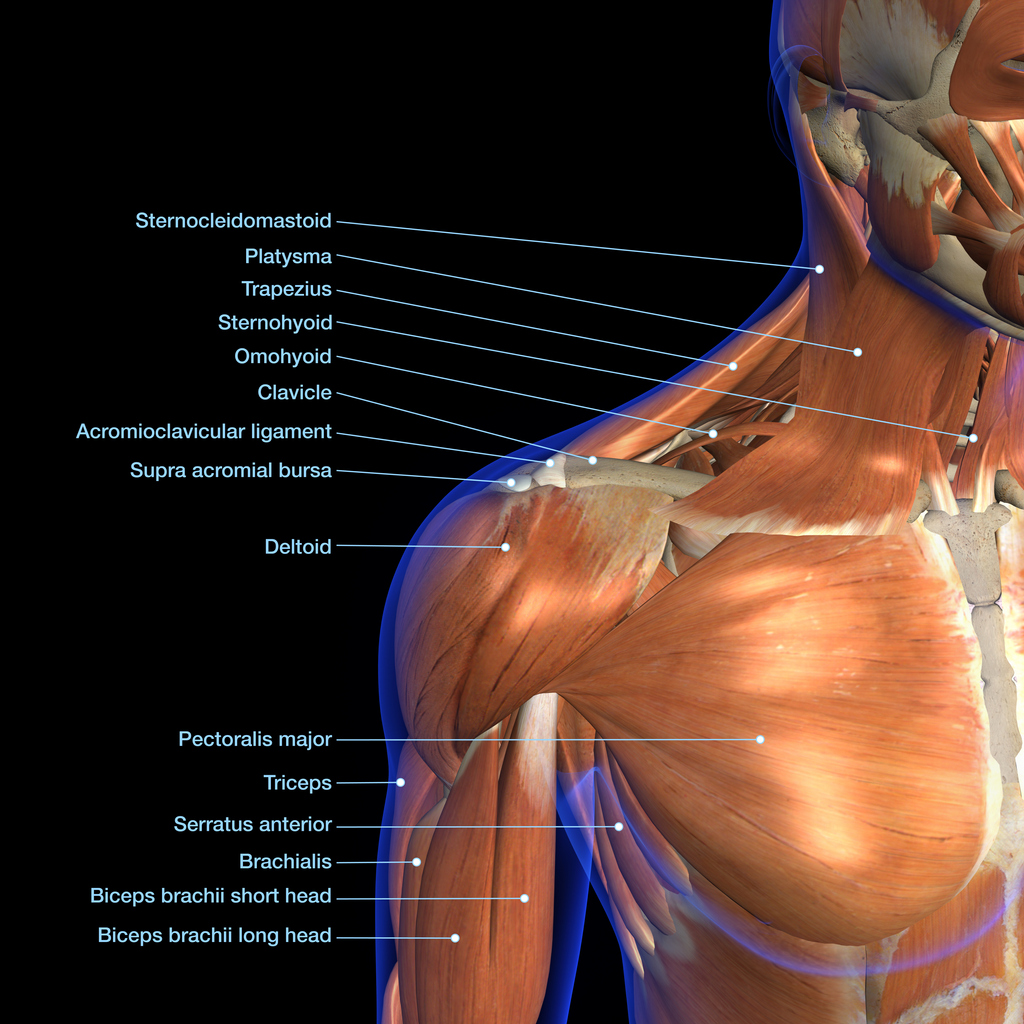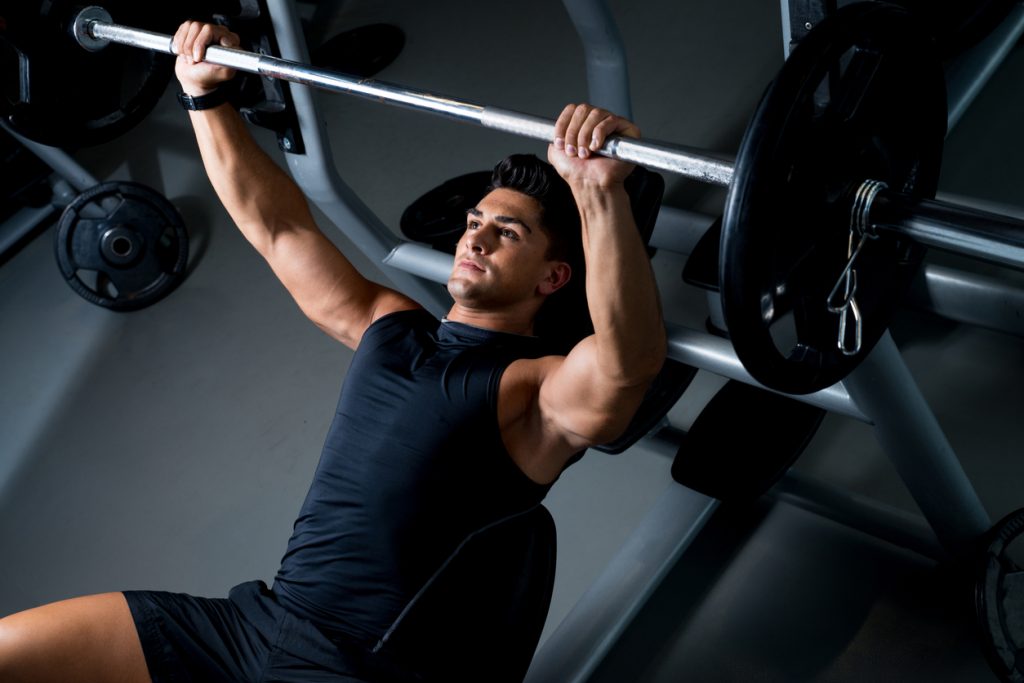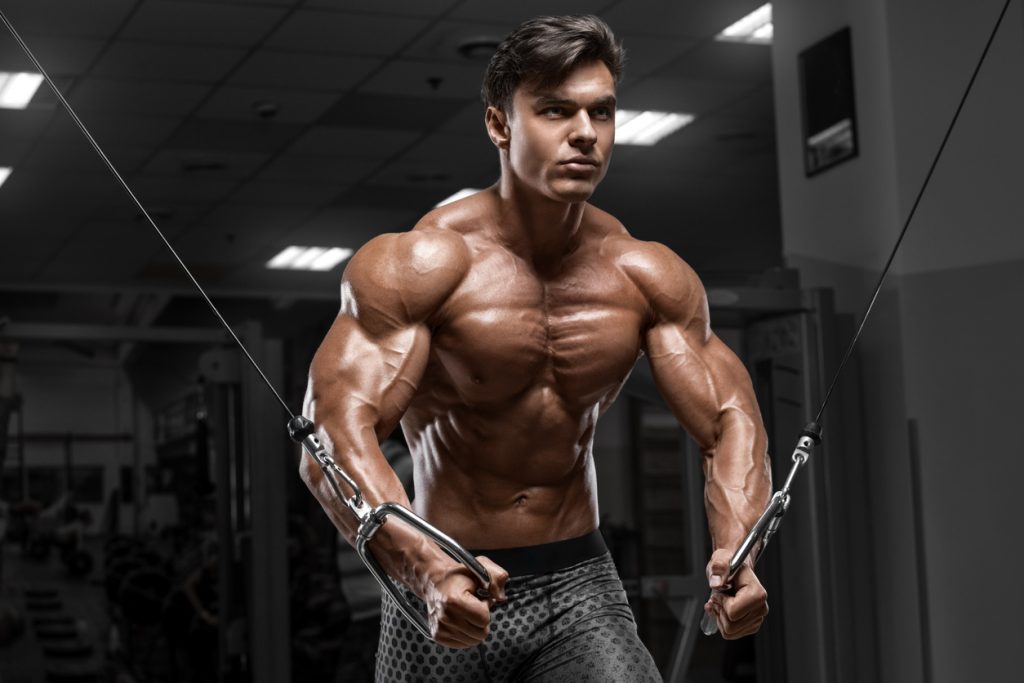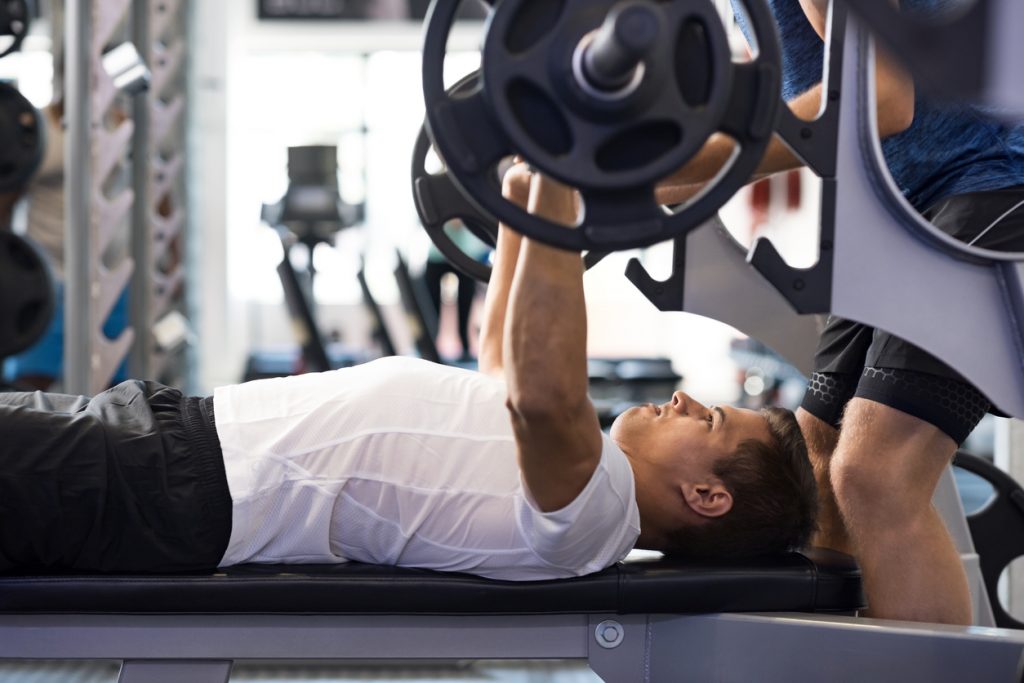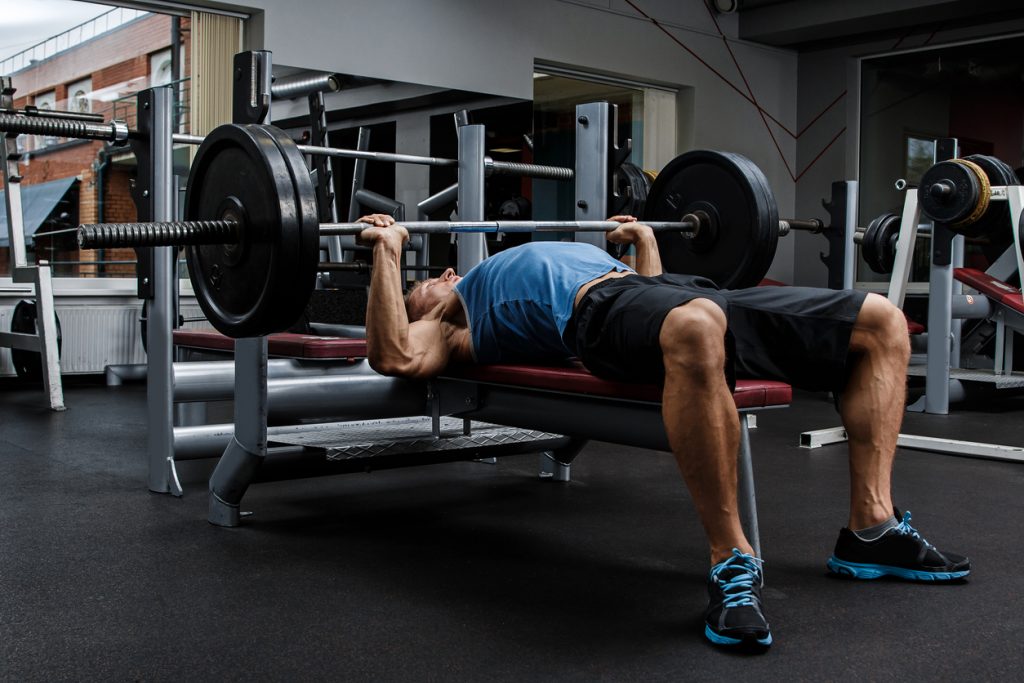2 muscle groups make up the pectorals:
- the pectoralis major,
- the pectoralis minor.
The pectoralis major
Like a fan, the pectoralis major has 4 starting points. These are:
- the clavicle,
- the sternum,
- the sixth and seventh ribs,
- the humerus.
The uppermost fibres run parallel to the anterior deltoid. They form the clavicular portion or the upper part of the pectoralis major.
The fibres that are attached to the sternum are horizontal. They form the sternal portion of the pectoralis major.
The lower fibres are attached to the sixth and seventh ribs. They lie on the same line as the abdominal oblique major.
All the fibres of the oblique abdominis end in a tendon. This tendon is about 8 cm wide. It rotates 180° before attaching to the upper arm. This movement causes the higher fibres of the pectoralis major to attach lower than the lower fibres.
This particularity favours the following muscular actions:
- extension: this is the action which allows you, starting from an overhead position, to bring your arm down and in front;
- internal rotation: your arm rotates internally;
- adduction: this is the action which allows you, starting from an elevated position, to bring your arm downwards and to the side;
- Horizontal adduction: you bring your arm towards the central axis of the body;
- flexion (to a lesser degree): you bring your arm straight up in front of you;
The pectoralis minor
The pectoralis minor is located below the pectoralis major. Its contribution to the formation of the pectoral muscle mass is minimal. It does, however, participate in the downward lowering and rotating movement. It also provides a certain stability to the scapula. However, it is not involved in the movement of the arm, even though the pectoralis major and minor function in coordination.
Mainly, when you bring your arm up in front of you, the pectoralis minor brings your scapula outwards. Then, when you lower your arm from an overhead position, the pectoralis minor will allow the scapula to rotate downwards.

